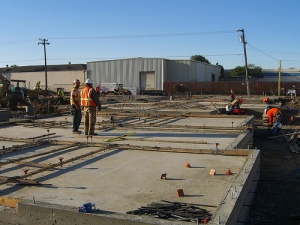[Update 12:42 pm ET, 11/3/11– CA is for Construction Contract Administration, or “Contract Administration” for short- thanks Liz O’Sullivan]
One of the Architect’s responsibilities on a construction project is that of construction contract administration (“CA”). While not every contract contemplates the architect performing a CA role, most commercial construction projects do. What, exactly, should be included in the CA role? The CA role can be whatever the parties agree upon. In fact, the AIA A201 form contract documents anticipate that the architect’s role will be defined in an exhibit.
Construction Construction Contract Administration
§ 4.2.10 If the Owner and Architect agree, the Architect will provide one or more project representatives to assist in carrying out the Architect’s responsibilities at the site. The duties, responsibilities and limitations of authority of such project representatives shall be as set forth in an exhibit to be incorporated in the Contract Documents.
What, then, should be included in the CA role assigned to the architect? The nature of the construction administration role is project specific. Some projects require a full-time on-site architect, a clerk of the works, or a weekly or bi-weekly site visit. Because the nature of the CA role cannot be adequately described in a form document, it is especially critical that you take care to describe the specific CA duties assigned to the architectural team in detail.
One of the main CA roles for the design team is that of site observation. Consider:
- What frequency is contemplated for visits?
- How long should those visits last?
- What is your role during such site visits?
I see many disputes that arise over a misunderstanding as to how often the architect should be on-site, and what his role is in observing the contractor’s work once he is there. Again, being specific will only help you to avoid misunderstandings, possible litigation, or even extra liability later on.
Perhaps the most important concept to remember for your CA role on a construction project: never agree to “inspect” the contractor’s work. Your role should be observation to see that the work is in general conformance with your design. You cannot guarantee the contractor’s work (nor would such be insurable). Therefore, be careful to use the word “observation” and not the word “inspect” in your CA description.
What have been your construction observation experiences? Drop me a line and tell me your story. (And thanks to my many new readers to the blog this week!).

